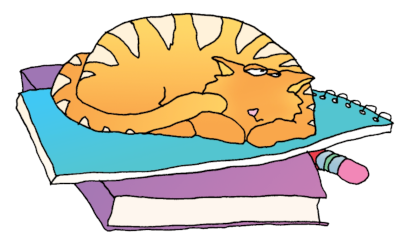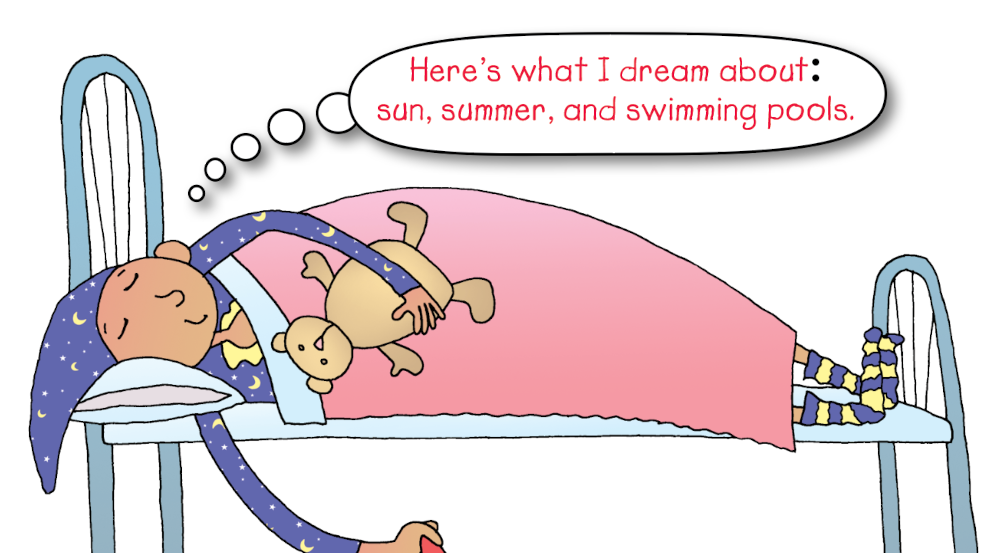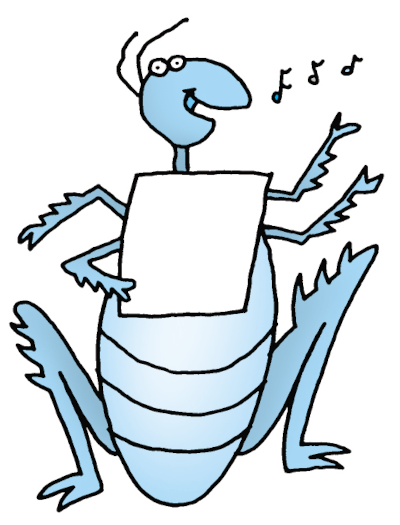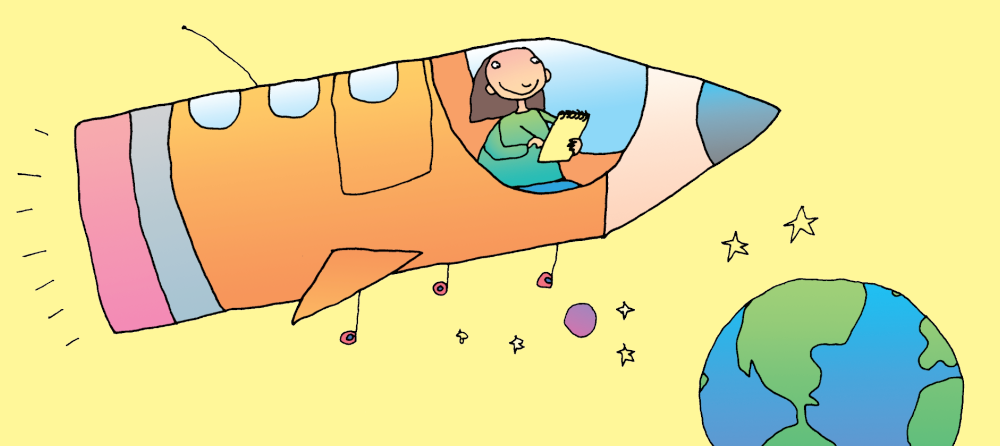WT 321
Page 320
Proofreader’s Guide

Page 321
Marking Punctuation
A period tells you to stop. A comma makes you pause. A question mark asks for information, and an exclamation point brings excitement! These punctuation marks shape your reading and writing journey.
In this first part of the “Proofreader’s Guide,” you’ll learn to use each important piece of punctuation. Turn here for rules and examples to guide you on your way!
On Your Mark
WT 322
Page 322
Period
A period is used at the end of a sentence. A period has other important uses, too.
A period after a sentence acts like a stop sign.
At the End of a Sentence
Use a period at the end of a sentence that makes a statement.
A statement ends with a period. (statement)
Also use a period at the end of a request or a command.
Please end a request with a period. (request)
Use a period with a command. (command)
After an Initial
Use a period after an initial in a person’s name.
E. B. White C. S. Lewis
After an Abbreviation
Use a period after an abbreviation that shortens a word. (See pages 338–339.)
Ms. Mrs. Mr. Dr. E. Third St.
As a Decimal in a Number
Use a period as a decimal point in numbers.
I am 99.9 percent sure that I brought my homework.
Use a period to separate dollars and cents.
That book costs $12.95.
WT 323
Page 323
Comma
Commas tell a reader where to rest or pause in a sentence. They are used to make your writing easier to read.
A comma (,) looks like a period with a tail on it.
Between Items in a Series

Use a comma between words or phrases in a series. (A series is a list of three or more things.)
I like apples, oranges, and grapes. (words)
My cat sleeps all afternoon, wakes at dinnertime, and yowls for treats. (phrases)
In Letter Writing
Use a comma after the greeting in a friendly letter or email message.
Dear Principal Jones, (greeting)
Use a comma after the closing in letters and email messages.
Sincerely,
Celeste (closing)
To Keep Numbers Clear
Use a comma in numbers of four or more digits.
The funniest video won $20,000!
Our school collected 17,000 aluminum cans!
WT 324
Page 324
Comma (continued)
Between a City and a State

Use a comma between a city and a state in a sentence or in an address.
We live in Boise, Idaho. (sentence)
714 Maple Avenue
Eunice, LA 70530 (address)
Tip
Do not use a comma between a state and a ZIP code.
In Dates and Addresses
Use a comma between the day and the year in a sentence or in the heading of a letter.
I watched the Memorial Day Parade on May 27, 2024. (sentence)
July 18, 2024 (heading of a letter)
Tip
Do not use a comma between a month and a year.
In Compound Sentences
Use a comma before the connecting word in a compound sentence. A compound sentence is made up of two simple sentences that are connected by or, and, or but.
My room was a mess, but I knew where everything was.
I cleaned this afternoon , and now I can’t find anything.
WT 325
Page 325
To Set Off a Speaker’s Words
Use a comma to set off the exact words of a speaker from the rest of the sentence.
Maya said, “Baby muskoxen are so cute.”
“Be careful,” Dr. Oakley warned. “They’re little bulldozers.”
“Yes,” Maya replied, “but they’re cute little bulldozers!”
After an Introductory Word or Group of Words
A Word That Expresses Emotion
Use a comma to set off an interjection. An interjection is a word that shows emotion.
“Whoa, that raven is huge!”
The Name of a Person Spoken To
Use a comma to set off the name of someone you are speaking to.
“Willow, did you feed that raven?”
An Introductory Group of Words
Use a comma to set off a group of words that comes before the main part of a sentence.
With a little piece of cheese, Willow made a new friend.
Between Describing Words
Use a comma between two words that describe the same noun.
Sierra had a long, exhausting flight.
She is a young, dedicated veterinary student.
WT 326
Page 326
Colon
A colon is used in three special cases, including to show time.
To make a colon, put one dot on top of another one (:).
Between Numbers in Time
Use a colon between the parts of a number showing time.
I woke up at 6:45 a.m.
Tonight, I’ll go to bed at 9:30 p.m.
In a Business Letter
Use a colon after the greeting in a business letter.
Dear Mr. Frank:
Dear Editor:
Dear Ms. Grohl:
Dear Senator:
To Introduce a List
Use a colon to introduce a list.
I love three summer things: sleeping in, sudden thunderstorms, and watermelon.

WT 327
Page 327
Apostrophe
An apostrophe is used to make contractions or to show ownership.
An apostrophe looks like a comma, but it floats above the letters it separates: It’s like a balloon!
In Contractions
Use an apostrophe to form a contraction. The apostrophe takes the place of one or more letters.
|
Contraction isn’t would’ve it’s I’m you’re she’s |
Short For is not would have it is / it has I am you are she is |
To Form Possessives (Ownership)
Singular Possessive
An apostrophe plus an s is added to a singular noun to show ownership. (Singular means “one.”)
My teacher’s job is tough. The class’s volume is often turned up to 11.
Plural Possessive
An apostrophe is usually added after the s in a plural noun to show ownership. (Plural means “more than one.”)
Both sisters’ essays won awards.
For plural nouns not ending in s, an apostrophe plus an s must be added.
The people’s votes decide.
WT 328
Page 328
Quotation Marks
Quotation marks are used to punctuate titles and to set off a speaker’s exact words. Remember that quotation marks always come in pairs. One set comes before the quoted words, and a closing set comes after them, like this:
Dad said, “Watch for wildlife on the Mississippi.“
To Set Off Spoken Words
Use quotation marks before and after the exact words of the speaker.
“A bald eagle!“ I shouted.
Dad replied, “They fish the Mississippi all along here.“
“Wow,“ I said, “grabbing fish while they fly?“
“Yep.“ Dad pointed downriver. “Watch this one skim the water. . . . He just caught a fish!“
Tip
In most cases, periods, commas, question marks, and exclamation points at the end of quoted text are placed inside the quotation marks.
To Punctuate Titles
Use quotation marks to punctuate titles of short works like songs, poems, and short stories.
In music class, we sang “Under the Sea.“
Ms. Wilson read a poem called “Jabberwocky.“
I wrote a story called “Beware the Beast of Bray Road!“
WT 329
Page 329
Hyphen
A hyphen is used to join two words that work together.
To Join Compound Nouns and Adjectives
Athens and Sparta were city-states.
I got a first-place trophy!
Some compound adjectives include many words.
I am a soon-to-be superstar, not just a run-of-the-mill third grader.
In Fractions
Use a hyphen between the numbers in fractions written as words.
We watched two-thirds of the episode before bedtime.

To Divide Words
Use a hyphen to divide a word at the end of a line.
Can you tell a cricket from a grass-
hopper?
(Divide words between syllables. For example, grass-hop-per can be divided in two places.)
Question Mark
A question mark is used at the end of a direct question.
At the End of a Question
What’s your favorite food?
Have you ever had shawarma?
How about sushi?
WT 330
Page 330
Exclamation Point
An exclamation point is used to express strong feeling. It may be placed after a word, a phrase, or a sentence.
To Express Strong Feelings
Wow! (word)
What a beautiful dress! (phrase)
I love that color on you! (sentence)
Tip
Don’t use too many exclamation points in your writing. They lose their value when they are used again and again.
Parentheses
Parentheses are used to add information. Parentheses come in pairs.
To Add Information
Parentheses (like these) set off extra information within a sentence.
Sometimes parentheses can set off a whole sentence. (This is an example.)
Tip
If a whole sentence appears in parentheses, capitalize and punctuate it just as if it stood alone.
WT 331
Page 331
Underlining and Italics
Underlining is used to mark titles of long works: books, plays, television programs, movies, and magazines. If you use a computer, you can put titles in italics instead of underlining them.
For Titles
The Wild Robot or The Wild Robot (a book)
Elemental or Elemental (a movie)
Nature or Nature (a television program)
Cricket or Cricket (a magazine)
Tip
Use quotation marks (“ ”) for titles of short works like poems, songs, and short stories.
For Special Words
Use underlining (or italics) to mark the names of aircraft and ships.
USS Enterprise or USS Enterprise (aircraft carrier)
Voyager 1 or Voyager 1 (spacecraft)

Teacher Support:
Click to find out more about this resource.
© 2025 Thoughtful Learning. Copying is permitted.
k12.thoughtfullearning.com